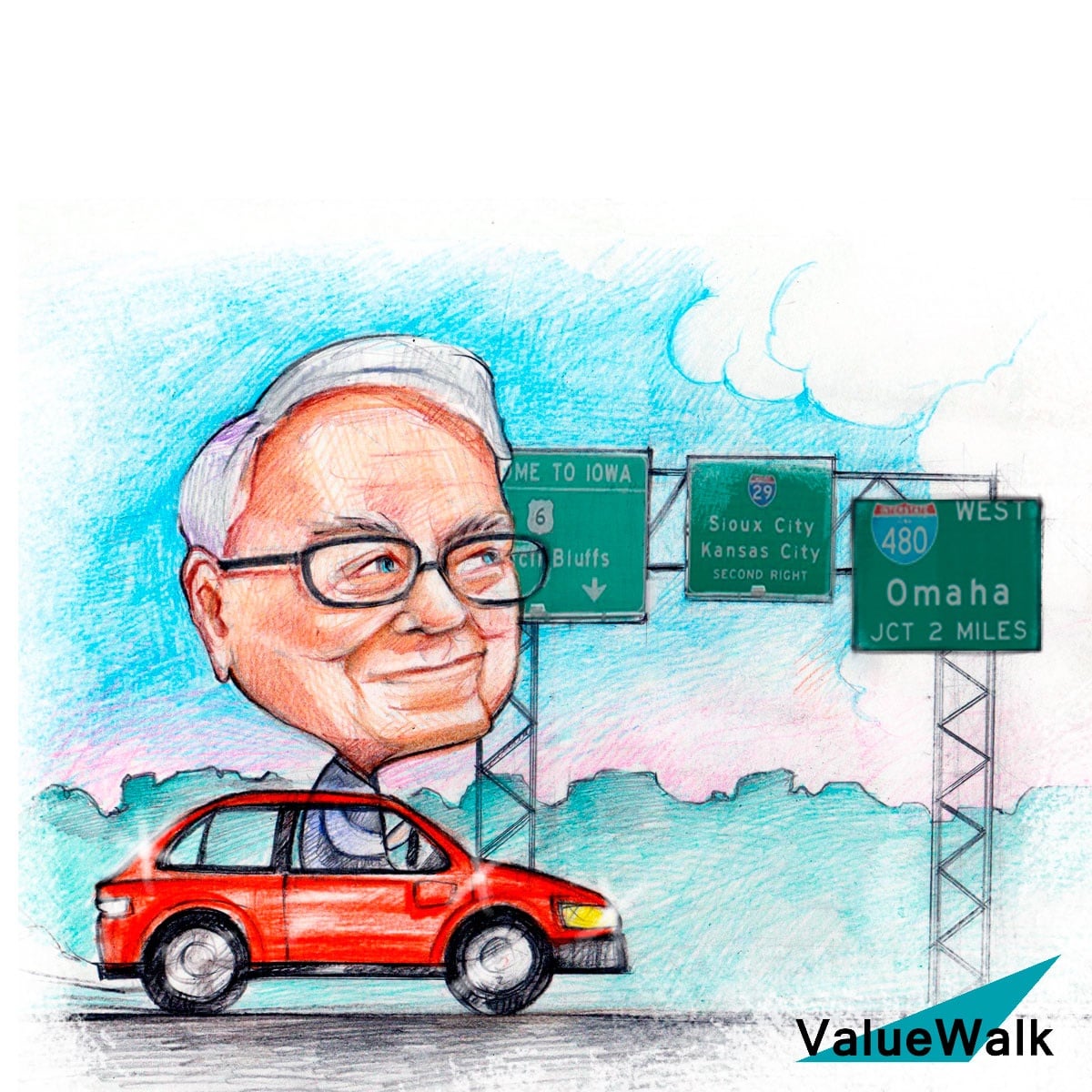Warren Buffett’s Berkshire Hathaway Inc. (NYSE: BRK.A) (NYSE: BRK.B) has modestly underperformed the S&P 500 since the beginning of 2002 (up to the end of 2020). The difference is not large, an average of less than 30 basis points (0.3%) per year, basically a statistical tie. But if you throw in one additional measure, Berkshire has OUTperformed during that 19-year period, as well as in the 37year outperformance during the period from 1964 to 2001. The new measure is that of a stock’s safety.
Q3 2021 hedge fund letters, conferences and more
Berkshire Hathaway’s Stock Performance
Performance ought to be evaluated through a combination of risk AND return. But too many investors focus only on the return side of the equation, and not on the risk side (that is, what Ben Graham would call “safety”). If one realizes that Berkshire is obtaining its near-market returns with decidedly less risk of loss than that of the average stock, one would come to the conclusion that Berkshire is still outperforming on a risk-adjusted basis.
The issue is that Berkshire’s holdings are MUCH safer than most of the major stock market indexes. This can be measured by information from Value Line (where I used to work), which maintains a proprietary index of about 1700 stocks that it covers, which is considered a fair proxy for the market. At the bottom of each one page report of Value Line are three numbers relating to (stock) price stability, (stock) price growth persistence, and earnings predictability. They are scaled in percentiles from 5 (low) to 100 (best). So a score 75 or higher in each category represents the top quartile, 50-70, the second quartile, 25-45 the third quartile, and 5-20 bottom quartile. One composite score is a simple average of the three scores. Our preferred metric is a weighted score, with a weight of one-third for price stability, one sixth for price growth persistence, and one half for earnings predictability (the most important factor of safety).
A look at twelve of Berkshire Hathaway’s largest U.S. common stock holdings at the end of 2020 will illustrate the point. In tabular form are the names of the stocks, followed by five numbers: the price stability, the price growth persistence, the earnings predictability, the unweighted average, and the weighted average. In bold is the resulting quartile (from 1-4):
- AbbVie Inc (NYSE:ABBV) (80,80,85, 82,83;1).
- American Express Company (NYSE:AXP) (70, 60, 55, 62, 61;2):
- Apple Inc *(NASDAQ:AAPL) (95, 90, 70, 85, 82; 1):
- Bank of America Corp (NYSE:BAC) (60, 90, 55,70, 64; 2)
- Bank of New York Mellon Corp (NYSE:BK) ((80, 50, 85, 71, 77; 1)
- Charter Communications Inc (NASDAQ:CHTR) (90, 90, 15,65, 53; 2)
- Chevron Corporation (NYSE:CVX) (65, 10, 5, 27, 26; 3),
- Coca-Cola Co (NYSE:KO) (90, 70, 95, 77, 86;1)
- Merck & Co., Inc. (NYSE:MRK) (95, 70,80, 82, 83;1)
- Moody's Corporation (NYSE:MCO) (85, 100, 100, 95, 95; 1)
- US Bancorp (NYSE:USB) (85, 45, 75, 68, 73; 2)
- Verizon Communications Inc. (NYSE:VZ) (100, 25, 100, 75, 87; 1)
Berkshire’s Largest Subsidiary Holdings
There is another factor. Three of Berkshire’s largest subsidiary holdings are not publicly traded because they are closely held. They are GEICO, the insurance company, BHE, Berkshire Hathaway Energy, and BNSF, the former Burlington-Northern Railway.. To estimate their safety, we used the Value Line numbers for three of their main competitors, All State, for GEICO; Idacorp, for BHE; and Union Pacific, for BNSF.
The numbers for these three proxies were:
- All State (75, 85, 100, 87, 89; 1)
- IDACORP Inc (NYSE:IDA) (100, 70, 100, 95, 95; 1)
- Union Pacific Corporation (NYSE:UNP) (85, 85, 85, 85, 85; 1)
Of these 15 holdings, public and private, there are 11 in the top quartile of safety, 3 in the second, and one in the third. Regarding the last, Chevron, Buffett has, from time to time in the past used resource stocks such as Exxon ( before it merged with Mobil), and Handy and Harman (silver) to balance his mainly consumer and financial stocks. Such holdings are volatile of a standalone basis, but can be used to make the portfolio safer when they are “countercyclical” to the portfolio’s other holdings. And Chevron does have one of the higher dividends among institutional quality stocks. (Note also that Berkshire owns $10 billion of Occidental Petroleum 8% cumulative preferred stock that functions as a fixed income instrument.)
But value investors vary greatly in their tolerance for risk. Warren Buffett’s results become even more impressive because he operates (mainly) in the top quartile of safety. Ben Graham operated in the second quartile of safety. He was not as demanding of earnings predictability and growth as Buffett, but compensated by looking to strong balance sheets for investor production. Yours truly has operated mainly in the third quarter of safety (higher risk sometimes means higher reward). But we’ve stumbled badly with occasional forays down to the fourth quartile, where basically “all bets are off.”. Ben Graham scrupulously avoided the stock of fourth quartile companies because they were like bankruptcy candidates, but would often buy the bonds of such companies after they were “busted,” on the theory that most (not all) of their value could be recovered in a workout.






